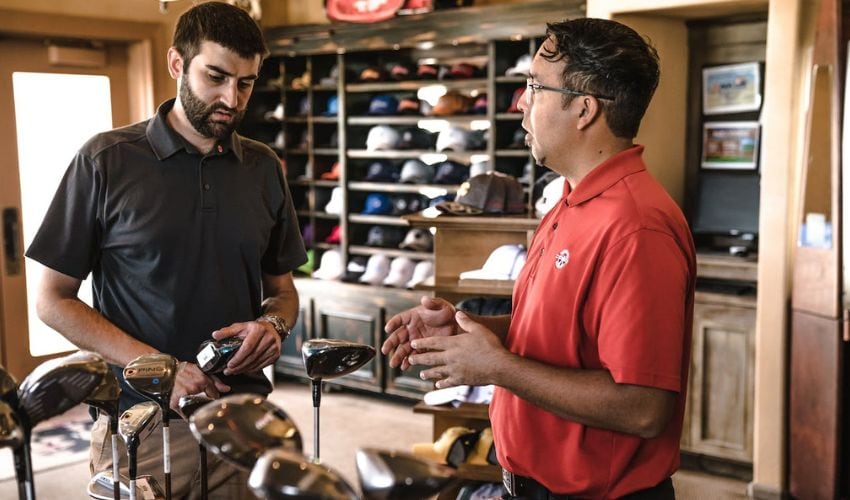Rethinking Traditional Sales Processes: Adapting to Customer Preferences

In recent years, there's been a significant shift in how customers approach the buying process, challenging traditional sales methodologies. Today's consumers are more informed and autonomous, often preferring to engage with sales representatives later in their buying journey. Understanding this shift and adapting to it is crucial for businesses looking to thrive in the current market.
Stages of the Customer Buying Process
The traditional buying process typically includes several stages: awareness, consideration, decision, and post-purchase. However, modern customers often spend more time in the early stages, conducting thorough research and evaluation before even considering a purchase. This shift means they are often well-informed by the time they reach the decision stage.

Sales reps need to understand that when a customer is contacting you - they have already done the product/service research, they know who else they could be buying from and you are on their short-list.
The Changing Role of Sales Reps
Customers now tend to engage with sales reps only when they are ready to buy. They've often done extensive research and have a clear understanding of what they want, making the role of the sales rep more about facilitating the final purchase rather than guiding the entire buying process.
Any sales rep that is sticking to traditional sales processes and attempting to educate an already educated customer will quickly find that their prospect becomes frustrated. Which leads the customer to the impression that they are not being listened to. An increasingly common complaint of customers about sales reps.
Demand for Product Demos in the Research Phase
Many customers now expect product demos or trials during their research phase, not as a part of the buying process. They want to experience the product "firsthand" to make an informed decision, often before they're ready to discuss purchasing options.
To take away sales from traditional businesses and big brand companies, social media platforms such as TikTok, LinkedIn and YouTube are overflowing with product demo videos from startups and solopreneurs.
Whether it's an endorsement from an influencer or serious marketing piece. Demonstrating the benefits of a product through use is now part of the awareness stage of the buying process for customers.
Disconnect Between Buyers and Sales Reps
There is an increasing disconnect in sales calls, primarily because sales reps are not always attuned to the customer's extensive pre-call research. Leading to a mismatch between the information the sales rep has been coached to provide and can make available; and what the customer actually needs or wants to know.

In some businesses, to prevent sales reps from 'over promising' to prospects, the sales process is very tightly managed. With scripts, sales assets and forms that keep the sales person from straying into areas that could lead to over stating benefits.
While this approach may protect the business legally. It is a big contributor to the problem of disconnect between buyers and sales reps.
Trust in Customer Service Over Sales
Information provided by customer service representatives tends to create greater trust than that from sales reps. This is likely because customer service interactions are perceived as more unbiased and focused on solving problems rather than making a sale.

Reengineering Your Sales Approach for Trust
For a business, this could mean redesigning the sales roles in your business.
Reassessing which skills are needed where in your business might lead you to. Put skilled customer service people into sales roles and having your traditional sales people in marketing roles - running webinars, manning social media channels and chat app, maybe even creating educational content for pre-buying engagement.
Because buyers consider transparency to be a major factor in having a trustworthy sales experience. They have an expectation that the sales rep will be transparent about pricing, features, and any limitations of your product or service during the sales call. This traditional idea of delaying the delivery of decision-making information to another sales call or a follow-up email with all the legals attached; just doesn't work any more.
With buyers being so well researched, ignoring or minimising problems mentioned by customers on social media or in reviews during a sales call is fatal. Failing to address limitations and bad PR is one of the quickest ways to break trust with the buyer.
Buyers expect to have a 'frank and fearless' discussion during the closing sales process. For them this is normal.
That means giving your customer facing employees lots of training - on how to explain why your product might not handle particular scenarios, and how to 'compare and contrast' it against others on their short-list. These are now an essential skills for sales reps.

When it comes to decision-making information. Breaking apart your traditional sales pitch and getting that vital educational content published wherever your prospects are doing their research is a great first step.
Creating video content for demos (or running your demos in webinars) will help you 'meet the buyer' where they are at in their research stage.
When reengineering your sales approach consider how resources will need to be changed to make them more effective for use in a different stage of the selling cycle.
Creating a Positive Buying Experience
Creating a positive, customer-centric buying experience is crucial, especially when your business has made it to a buyer's short-list. At this stage, the buyer is evaluating final options, making it a critical time to distinguish your offering through an exceptional customer experience.
Personalizing the Sales Call
By the time a buyer has short-listed potential vendors, they've gathered a considerable amount of information and are looking for specific solutions tailored to their needs. This stage calls for a consultative approach.
Sales reps should turn up prepared - well-versed in the buyer's industry, challenges, and specific pain points. Using this knowledge to tailor their answers to the buyer's questions, highlighting aspects of the product or service that meet their needs and be ready to provide work arounds for the situations when it won't. Demonstrating an understanding of the buyer's unique situation can build significant trust and rapport.
For some productsy, providing customised demos or trials, where the buyer can see firsthand how your product or service would work for them, can be highly persuasive.
Quality Buyer Sales Support
Equally important is ensuring that all interactions are seamless and value-driven. Every touchpoint, from the sales calls to follow-up communications, should reinforce the buyer's perception of your business as attentive, responsive, and committed to quality.
Speed and efficiency in communication are key; delays or miscommunications can quickly sway a buyer's decision at this critical juncture. From the buyer's perspective - "if you can't do a good job of attending to me during the sales process, how bad will post-sales support and customer service be?".
With so many options available to create great sales experiences. Being bad at customer sales, communication and support means being bad at business.
Everything from automation tools, generative AI, off-shore VA's, VoIP software and live streaming are available today to help every business with any sized budget to create a positive buying experience.
Transforming Your Sales Pipeline for a Buyer-Centric Experience
The shifting landscape of customer preferences necessitates a reevaluation of traditional sales processes. Today's customers value autonomy, transparency, and trust over aggressive sales tactics. By understanding and adapting to these preferences, businesses can create more effective, buyer-centric sales strategies that not only meet but exceed modern customer expectations.
The Buyer-Centric Sales Pipeline
A buyer-centric sales pipeline represents a shift from traditional, seller-focused methods to a process that is entirely focused on the buyer's needs, preferences, and decision-making process. In such a pipeline, each stage is designed to align with the buyer's journey, emphasising understanding, engagement, and solution-oriented strategies rather than mere sales persuasion.
At the core of a buyer-centric pipeline are pipeline stages that are aligned with the buyer's journey stages—awareness, consideration, decision, and loyalty. In the awareness stage, for instance, the focus is on educational content and awareness-building rather than product-centric pitches. As potential buyers move through the pipeline, the communication becomes increasingly personalised. Sales representatives act more as consultants, offering solutions and insights tailored to the buyer's unique needs, rather than as traditional salespeople.
In a buyer-centric pipeline, technology plays a crucial role in personalising and streamlining the sales process. Tools like CRM systems are used not just for tracking sales activities, but for gaining insights into buyer behaviours and preferences. This data informs the sales approach, ensuring that interactions are relevant as well as timely. For example, when a buyer has shown interest in a particular scenario or product use, the sales team can discuss solutions specific to that interest.
A buyer-centric pipeline makes greater use of feedback. Continuous feedback from buyers and customers is used to refine and adjust sales training for employees; ensuring alignment with evolving buyer needs and expectations. This might also involve adjusting communication strategies, revising pre-sales materials, or even rethinking the product or service.
In essence, a buyer-centric sales pipeline is adaptive, responsive, and deeply rooted in understanding the buyer's world. It prioritizes the buyer's experience throughout the sales process, aiming not just to close a sale, but to build a strong enduring brand reputation.

